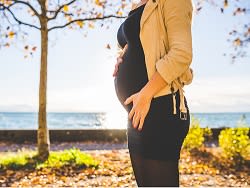By Bismruta Misra, MD, MPH, FACE, Medical Director, Stamford Health Osteoporosis Center
Osteoporosis is a silent and rarely discussed condition that causes bones to become weaker which increases the risk of fractures (broken bones). 10 million Americans have osteoporosis, and over 40 million have low bone density, a precursor to osteoporosis.
Here are some startling facts about osteoporosis in the United States:
I am an endocrinologist with Stamford Health Medical Group and part of this specialty is taking care of osteoporosis. My goal is to prevent fractures so that my patients can remain active and healthy throughout their life.
Maintaining good bone health through the years is not only for elderly patients. It is important to start thinking about your bone health from childhood to adulthood.
1. Exercise regularly
This is not only good for your bones, but also for your health. Weight bearing exercises ranging from walking, tennis, tai chi, or essentially any activity where you are standing, will help to keep your bones strong. We also recommend adding in weight training and strengthening exercises such as pilates, barre or gentle yoga. Mix it up so it stays fun!
2. Determine the right amount of calcium and vitamin D
Most people should try to get calcium from their diet (see this calcium calculator), and most will need to take a vitamin D supplement because there are not many natural sources of vitamin D. If you have medical conditions that affect your vitamin absorption, your doctor may recommend larger amounts.
3. Ask your doctor about a bone density test
The National Osteoporosis Foundation (NOF) recommends that all women over 65 or of postmenopausal age with risk factors, as well as men over 70, talk to their doctors about a bone density test to diagnose osteoporosis. Certain medical conditions, medications and other risk factors such as family history could warrant bone density test sooner.
This is a painless, 15-minute test that will help predict your risk of breaking a bone. Statistics show that women who have bone density scans have 35% fewer hip fractures than those who do not.
4. Take action to prevent falls
Look around the house. Where are you most likely to fall? Beware of loose rugs and slippery stairs. Don’t walk around in socks, and keep a light by your bed in case you need to get up in the middle of the night. Some of these may seem obvious, but addressing them could prevent a fall and therefore a fracture!
5. Don’t be afraid of medications if they are recommended to you
There is a lot of controversy and misconception regarding osteoporosis medications. The medications that are currently FDA approved for osteoporosis are safe and significantly reduce the risk of hip fracture.
A 50-year-old woman has a 50 percent chance of breaking a bone. Medications are recommended because they reduce the rate of fractures, some drugs as much as a 70% reduction in vertebral (spine) fractures and a 40% reduction in hip fractures. The benefits far outweigh any risk of rare side effects.
You can prevent broken bones from osteoporosis! Take steps to improve your bone health; they will improve your overall health!
Osteoporosis is a silent and rarely discussed condition that causes bones to become weaker which increases the risk of fractures (broken bones). 10 million Americans have osteoporosis, and over 40 million have low bone density, a precursor to osteoporosis.
Here are some startling facts about osteoporosis in the United States:
- Osteoporosis causes 2 million bone fractures every year.
- 1 in 2 women and 1 in 4 men aged 50 and over will break a bone due to osteoporosis.
- Osteoporosis leads to more than 800,000 emergency room visits and more than 2.6 million doctor appointments a year.
- 54 million people have low bone density or osteoporosis.
- More women die each year from complications of hip fracture than from breast cancer.
- A woman’s risk of hip fracture equals her combined risk of breast, uterine, and ovarian cancer.
I am an endocrinologist with Stamford Health Medical Group and part of this specialty is taking care of osteoporosis. My goal is to prevent fractures so that my patients can remain active and healthy throughout their life.
Maintaining good bone health through the years is not only for elderly patients. It is important to start thinking about your bone health from childhood to adulthood.
1. Exercise regularly
This is not only good for your bones, but also for your health. Weight bearing exercises ranging from walking, tennis, tai chi, or essentially any activity where you are standing, will help to keep your bones strong. We also recommend adding in weight training and strengthening exercises such as pilates, barre or gentle yoga. Mix it up so it stays fun!
2. Determine the right amount of calcium and vitamin D
Most people should try to get calcium from their diet (see this calcium calculator), and most will need to take a vitamin D supplement because there are not many natural sources of vitamin D. If you have medical conditions that affect your vitamin absorption, your doctor may recommend larger amounts.
3. Ask your doctor about a bone density test
The National Osteoporosis Foundation (NOF) recommends that all women over 65 or of postmenopausal age with risk factors, as well as men over 70, talk to their doctors about a bone density test to diagnose osteoporosis. Certain medical conditions, medications and other risk factors such as family history could warrant bone density test sooner.
This is a painless, 15-minute test that will help predict your risk of breaking a bone. Statistics show that women who have bone density scans have 35% fewer hip fractures than those who do not.
4. Take action to prevent falls
Look around the house. Where are you most likely to fall? Beware of loose rugs and slippery stairs. Don’t walk around in socks, and keep a light by your bed in case you need to get up in the middle of the night. Some of these may seem obvious, but addressing them could prevent a fall and therefore a fracture!
5. Don’t be afraid of medications if they are recommended to you
There is a lot of controversy and misconception regarding osteoporosis medications. The medications that are currently FDA approved for osteoporosis are safe and significantly reduce the risk of hip fracture.
A 50-year-old woman has a 50 percent chance of breaking a bone. Medications are recommended because they reduce the rate of fractures, some drugs as much as a 70% reduction in vertebral (spine) fractures and a 40% reduction in hip fractures. The benefits far outweigh any risk of rare side effects.
You can prevent broken bones from osteoporosis! Take steps to improve your bone health; they will improve your overall health!
Featured Expert/ Author















